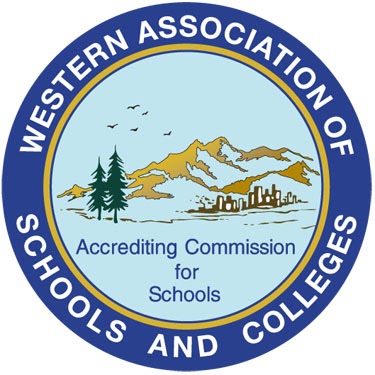With the Western Association of Schools and Colleges visiting team having given its recommendations for school growth in early October, the school is now beginning the early steps in implementing those ideas.
The visiting team, made up of several educators and administrators from other schools in the state, identified increasing staff collaboration, continuing to build on social-emotional learning, refining assessments and improving professional learning communities as the top goals for the school.
WASC assists schools in developing effective educational programs and promises that their accreditations ensure that schools have met standards of quality and effectiveness. For Saratoga High, which traditionally gets top marks the review has taken place every six years.
The WASC process consists of six groups focusing on different areas of growth, with each group having teacher leads and multiple students. Parents also came to many WASC team meetings to add their insight and contributions. The team led the visiting WASC accreditors through the process and pinpointed areas of achievement and shortcomings on the campus.
The school last underwent re-accreditation in 2013. This year, the process was extended by eight months and was finished online via Zoom.
“Although we had to finish the back-end of the WASC process virtually, [English teacher Amy] Keys and [assistant principal Kerry] Mohnike did a great job leading the team through the process,” principal Greg Louie said.
Louie characterized the l feedback from the committee as positive. He expects the school will receive one of the following levels of a six-year accreditation: one with no midterm visit, one with a one-day midterm visit or one with a two-day midterm visit.
Louie expects WASC to give the school a one-day midterm since the visiting committee didn’t see the full school because of online learning. But given the school’s history of six-year visits with no midterm visits, he said he would also not be surprised if the school received a full score and no midterm visits.
During the virtual visit in October, Louie’s role was to make sure the visiting team could seamlessly travel between Zoom class to Zoom class. Each morning, he met with Keys and Mohnike to address any problems the visiting team faced and what the team would be doing for that day.
Because of the virtual format, the visiting team could not examine teacher-to-student or student-to-student relationships as closely as they would have in person. For example, students often don’t talk to each other in breakout rooms, an inaccurate representation of normal student-student relationships, Louie said.
The rest of the WASC review group was broken into different subgroups, labeled A-D. The subgroups focused on topics ranging from school leadership and governance to school curriculum to students’ personal and academic growth.
Senior Katie Chen, one of the student representatives on the team, served on a group that focused on school assessments. Chen gave input on how teachers evaluate students and adjust their curricula.
Chen said that the process allowed her to become more familiar with the school staff and better understand what they have been trying to do to support students, both in general and during virtual learning.
“It helped me bond with more staff members as I was able to talk to teachers I’ve never had before,” she said. “They were really open to hearing what we had to say.”
Science and business teacher Kirk Davis was in the group that focused on the three essential areas of a learning community: parent and community engagement, school culture and environment and personal and academic student support.
According to Davis, most of the work for the WASC accreditation happened last school year because the visit was originally scheduled to happen in March. The shelter-in-place delayed the meeting to this year, but the staff team had completed most of the actual work for the report.
“We did have a few Zoom meetings, but it was fairly straightforward, and we worked on shared documents to finish things up,” Davis said.
According to Davis, WASC identified areas of strengths as student performance, parent and community engagement, teacher engagement and focus on students, support for students and the overall campus safety and maintenance.
Areas of growth included decreasing student stress and pressure, increasing access to support resources like the Tutoring Center and CASSY, increasing communication among parents and students and, according to Davis, having the faculty “fine tune [their] teaching practices to prepare students for ‘real life’ in a changing world.”
Davis said the feedback was similar to that of the last review in 2013, yielding only slight shifts in the school’s goals.
The WASC accreditors’ main points of feedback regarded the school’s student culture and academic rigor. The team’s feedback on which areas to focus on matched what the school wrote as their areas of improvement.
As the school year progresses, Louie and the school WASC team will focus on the specified areas identified in the process.
“We weren’t trying to put makeup on a pig because we know our flaws and our areas of growth that need to be attended to,” Louie said. “The visiting team substantiated that as that was what they also saw.”
























